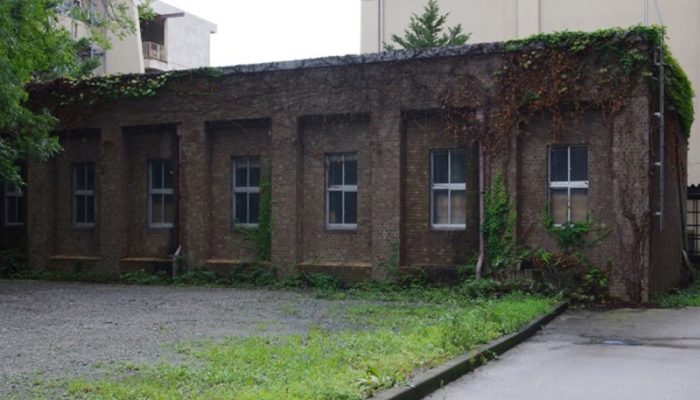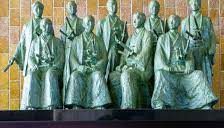History

On July 3, Taisho 15 (1926), Shigeki Sugiyama, a disciple of Professor Kenji Seino of Kyoto University, assumed the position of pathology professor at our university, establishing the Second Department of Pathology. Professor Sugiyama was appointed as a professor of pathology at Kyoto University on December 24, Showa 13 (1938), concurrently serving as a professor at Kanazawa Medical University (resigning from this position on September 8, Showa 18). On September 9, Showa 18 (1943), Tatsumaru Ishikawa, a disciple of Professor Seino at Kyoto University, assumed the position of chief professor of the Second Department of Pathology (appointed on July 5 of the same year). Professor Ishikawa retired on March 31, Showa 48 (1973). In April of Showa 48 (1973), Goro Ota, an associate professor at the Department of Medical Zoology at Kanazawa University, assumed the position of chief professor of the Second Department of Pathology (appointed on April 15 of the same year). Professor Ota retired on March 31, Showa 62 (1987). In May of Showa 62 (1987), Anji Nakanuma, a lecturer in the department, was promoted to chief professor (appointed on May 1 of the same year), and remains in this position to date. In Heisei 13 (2001), with the establishment of graduate school departments, the department name was changed to the Department of Morphological and Functional Pathology, which continues to the present.
Biographical Outlines and Achievements of Past Professors

First Generation, Professor Shigeki Sugiyama
(Tenure: July Taisho 15 (1926) – September Showa 18 (1943))
Biography
Born on September 15, Meiji 27 (1894) in Kuse-cho, Okayama Prefecture Graduated from Kyoto University Faculty of Medicine on July 1, Taisho 9 (1920) Assumed the position of chief professor of the Second Department of Pathology at Kanazawa Medical University on July 3, Taisho 15 (1926) Appointed as professor of pathology at Kyoto University on December, Showa 13 (1938), concurrently serving as a professor at Kanazawa Medical University Resigned from the concurrent position at Kanazawa Medical University in September Showa 18 (1943) Passed away on October 8, Showa 20 (1945) at the age of 65
Affiliated Society
Japanese Society of Pathology
Research Topics
Biological research on leukocytes and tissue cells
Research Achievements
Published papers on various topics such as supravital staining of leukocytes, chemotaxis of blood and tissue cells, nuclear migration of leukocytes, phagocytosis of foreign bodies and bacteria by leukocytes, phagocytosis of foreign bodies by subcutaneous tissue cells, morphometric studies of various cells, perinuclear granules, and erythrocyte sedimentation rate studies using microanalyzers
Representative Publications
New Studies on Blood and Tissue and their Methods
Awards
- Received the Pathology Society Wilhyo Award in April, Showa 5 (1930) Presented a homework report at the annual meeting of the Japanese Society of Pathology in April, Showa 13 (1938)

Second Generation, Professor Tatsumaru Ishikawa
(Tenure: July Showa 18 (1943) – March Showa 48 (1973))
Biography
Born on March 29, Meiji 41 (1908) in Shimomura, Imizu-gun, Toyama Prefecture Graduated from Kyoto University Faculty of Medicine in Showa 6 (1931) Appointed as chief professor of the Second Department of Pathology at Kanazawa University on July 5, Showa 18 (1943) Concurrently served as the director of the Cancer Research Institute of Kanazawa from April, Showa 43 (1968) Retired as professor at Kanazawa University in March, Showa 48 (1973) Passed away in October, Showa 48 (1973) at the age of 65
Major Society Chairmanships
Chairman of the 16th Japan Cell Chemistry Symposium and the 18th Japan Oriental Medical Society General Meeting
Affiliated Societies
Japanese Society of Pathology, Japanese Society for Cell Biology, Japan Oriental Medical Society, Japan Cell Chemistry Symposium
Research Topics
Research on oxidation-reduction potential, histological studies, cytological experimental research, morphological studies on atomic bomb diseases, functional morphological studies on chemical receptor systems, studies on neural differentiation, studies on mature neural systems, pathophysiology of the autonomic nervous system and spinal ganglia, and central nervous system control of chemical receptor systems
Research Achievements
- Initiated systematic studies on histological chemistry, devised various new methods, and achieved results applicable to embryonic development
- Discovered the thyroid iodine accumulation substance kerogen monoyogenase in experimental thyroid nodules, including its cofactors
- Discovered the existence of the reflex form visceral wall reflex in autonomic nervous system function studies and paved the way for the scientific development of Oriental medicine
- Conducted immunocytochemical and biological studies on embryonic protein surface bases and metabolism in early development, pursuing neuronal differentiation in embryos using Cartesian diver methods
- Conducted comparative biochemical and immunocytochemical studies on tumors, successfully conducting carcinogenesis experiments using gene transfer in test tubes and opening up the path for analyzing carcinogenesis mechanisms
- Developed serum diagnostics for early-stage cancers and
Awards and Recognitions
- Showa 31: Presentation at the Annual Meeting of the Japanese Pathological Society
- Showa 48: Hokkoku Cultural Award




-700x400.png)